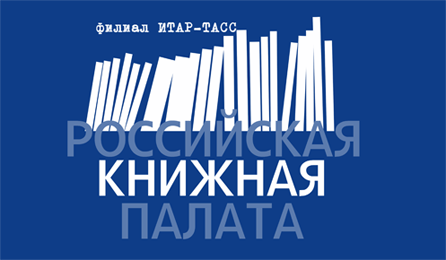Rodoman B. Russian cultural landscape: Theoretical and practical implications of the concept // The Russian Peasant Studies. 2021. V.6. №1. P. 13-25.
DOI: 10.22394/2500-1809-2021-6-1-13-25
Annotation
The author argues that the precise final definitions (recognized and universal) are often less important for scientists than the key features of the studied phenomena. Therefore, the author suggests to combine different concepts in order to get a working and temporary definition of the cultural landscape. The article presents this term as non-evaluative, mainly typological, non-taxonomic and ‘real’, which allows to consider its borders with the natural landscape as mobile, conventional and relative due to the fact that both landscapes are affected by human activities. The author describes factors and trends in the development of the cultural landscape, and regionalization as a tool to study and preserve it. The Russian cultural landscape is primarily determined by the interaction of the state with nature due to the obvious shortage of self-organized local communities. The author identifies endogenous (internal) and exogenous (external) factors in the (self)-development of the cultural landscape, which can be either stimulating or hindering. As the main features of the Russian cultural landscape the author considers its historically developed rhythm and ability to self-recover, which differ by country and region. Centuries of the military-colonial despotism and unprecedented centralization of the supreme power have turned the Russian space into a totalitarian landscape with the hypertrophied radial connections and the suppressed peripheral connections, which is embodied in the administrative-territorial division and determined the extraordinary social-economic, geographical, ecological and territorial polarization. The Russian landscape has a very specific feature – the so-called ‘inner periphery’, or hinterland (relative and ubiquitous): these are territories located closer to the country’s cores than to its outskirts but with all negative features of the outskirts. This inner periphery plays an important role in the preservation and development of the natural landscape as a potential basis of the territorial ecological framework, but to ensure such a role we need a comprehensive cultural-historical regionalization.
Keywords
Landscape, cultural landscape, administrative-territorial division, etatization of landscape, anisotropic landscape, ecological potential of administrative borders, social-economic polarization, hinterland, inner periphery, regionalization, cultural-historical areas.
About the author
Rodoman Boris B., DSc (Geography).
E-mail: This email address is being protected from spambots. You need JavaScript enabled to view it.
Rodoman B.B. Ecological specialization as a desirable future for Russia // The Russian Peasant Studies. 2017. V.2. №3. P. 28-43.
DOI: 10.22394/2500-1809-2017-2-3-28-43
Annotation
The author believes that in the future Russia can become a global environmental donor preserving the biosphere of the whole planet for the country’s vast territories and natural landscape have changed little under the human activities. Today in the global economy, Russia plays mainly a role of an exporter of exhaustible energy resources, which puts its future in a risky dependence on various unstable factors affecting the extraction and consumption of such resources. The article proposes a project of changing and expanding the role of Russia as a supplier of natural resources and conditions necessary for the survival and future development of the humankind. The author considers as the main wealth of the country not some minerals, vegetable or animal raw materials, but the entire natural landscape and all natural components of the cultural landscape. The preservation and maintenance of the natural landscape as the most important element of the biosphere, its material, spiritual and information consumption without destruction and depletion should become a priority branch of the Russian national economy. The accumulation of population in urban agglomerations, the lack of population and roads in the former rural areas, the vast military ranges consisting of forests and steppes, and the wild landscapes along the administrative borders of settlements and regions contribute to the transformation of the significant part of Russia into nature reserves and parks, and to the preservation of nature in hunting and fishing grounds for the eco-friendly land use and nature management. The ecological specialization and recreational role of the suburban area of the eucumene-polis can become priorities of the Russian national economy and provide the country with a unique and indispensable place in the global community.
Keywords
Russia, environmental donor, biosphere, national economy, natural landscape, cultural landscape, eco-friendly land use and nature management, ecological specialization
About the author
Rodoman Boris B., DSc (Geography),
E-mail: This email address is being protected from spambots. You need JavaScript enabled to view it.
Domnikov S.D. Forms of life and landscapes of culture. // Russian Peasant Studies. 2016. V.1. №1. P. 38-67.
DOI: 10.22394/2500-1809-2016-1-1-38-67
Annotation
The author considers a complex system of man-landscape relationship as a starting point of worldview formation and a primary condition for the development of cultural traditions. This basic level of social and environmental organization is presented as a space-technological and adaptiv e environmental system, which is constructed by the relations of man with the landscape and by a set of external world objects that are vitally important and culturally significant for human existence. The main function of culture is adaptive, whereas the landscape plays an active role in designing human world, i. e. in acquiring basic economic skills, technology development, and related programs and life strategies. The author believes that the historically accurate models of culture embody typologically different forms of social landscape and organize spatiotemporally the local ‘life-worlds’”; for instance, the classic landscape embraces the space of “the lack of the Other”. The author focuses on the genesis of the agrarian cultural tradition, and considers the relationship of two discourses — existential-phenomenological philosophy and philosophical anthropology. The article follows the general evolution of the classical anthropology with the distinction of dzōon (living being) and bios (life form), which led to the problematization of “symbolic forms” (E. Cassirer).
Keywords
totemism, anthropology, form of life, form of culture, symbolic form, cultural landscape
About the author
Domnikov Sergey D., PhD (History), Senior Researcher at the Department of Philosophy of Culture of the Institute of Philosophy of the Russian Academy of Sciences.
12/1 Goncharnaya Str., Moscow, 109240.
E-mail: domino‑This email address is being protected from spambots. You need JavaScript enabled to view it..





















